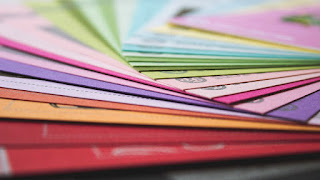Whether commemorating
a special event such as a wedding or anniversary, celebrating a special
birthday or congratulating on a new job, a bottle of champagne is a traditional
gift. But not everyone likes champagne
so what other sparkling wines are available?
Understanding the sparkle
Sparkling wine is a
wine that has bubbles and is carbonated.
It tends to be named by the region where it is produced – hence Champagne
comes only from the Champagne region of France.
Being possessive of their name and brand, the French won’t allow any
other sparkling wine to be called champagne, so hence a variety of names have
come along as the appeal of sparkling wines spread.
Sparkling wine also comes
in four levels of sweetness and the bottle will tell you what level it is. At the top of the scale is the Extra-Brut –
this is the dried kind of wine and is where the yeast in the process has
completely consumed the sugar so there no hint of sweetness to the resulting
drink. Next up is Brut, the most commonly
encountered and popular level. This wine
is dry with just a hint of sweetness as the yeast was stopped just before it
ate all of the sugar. Champagne is
nearly always Brut. Extra Dry is
somewhere between Brut and Extra-Brut and Prosecco is the most well known
variety. Finally, Demi-sec is a sweet
sparkling wine, usually drank with dessert as it has a noticeable amount of
sugar in it.
Types of sparkling wine
Champagne isn’t the
only sparkling wine from France as there is another type called Crement –
basically this is champagne that is made in other parts of the country,
normally Burgundy, Jura, Alsace and Loire to name a few. It has near the quality of champagne but a
less heavy price tag.
Prosecco has quickly
become the popular alternative to champagne and comes from Italy, using the
Glera grape. It has a less complex
flavour than champagne often said to have the flavours of white flowers, apple
and pear in it. It has become the
favourite sparkling wine for parties and for gifts, with personalised labels
being a great way to make a bottle a commemorative present as well as a tasty
one.
Lambrusco is the
other well known sparkling Italian wine and has become rather trendy in places
like New York. It is an off-dry
sparkling red wine from Emilia Romagna that works well with Italian foods such
as prosciutto and parmigiana reggiano.
Franciacorta is
another sparkling wine from Italy, specifically from the Lombardy region. It is very tasty though does tend to be
expensive and is made with chardonnay, pinot noir and pinot blanc grapes. The resulting wine tends to lack the zesty
acid of champagne.
Cava is the Spanish
sparkling wine, though at one time had a reputation of being less than the
best. Modern versions however, have
changed this and are a good quality product that is widely available. They also use the same methods as in
champagne and some are aged even longer.
The main grapes used are Xarella, Parellada and Macabeo.
Sekt is any of
Germany’s sparkling wines and some of these have come on a lot in recent years
to be a good quality product, with Riesling Sekt being noted as one such
variety. It has the green apple and
nectarine flavours of a Riesling with a sparkle as well.








